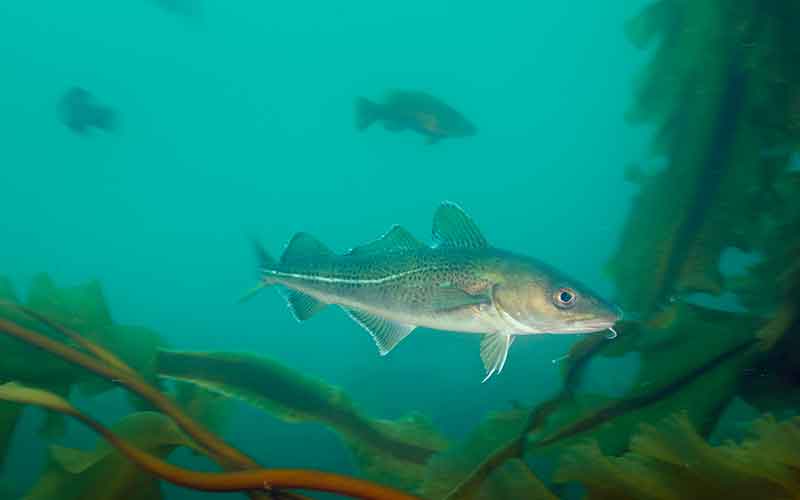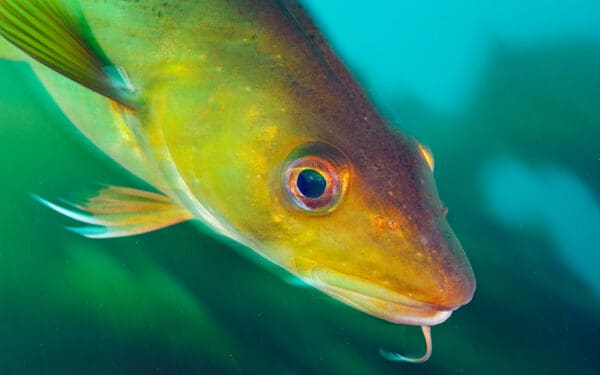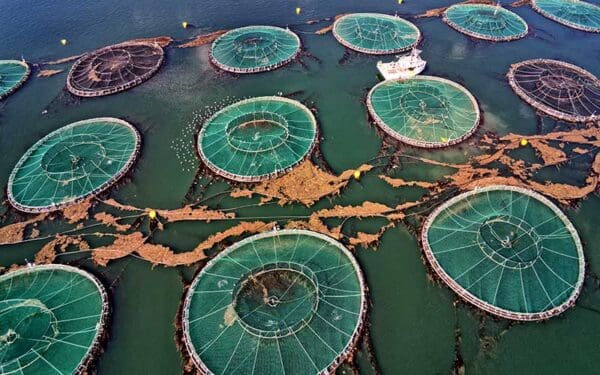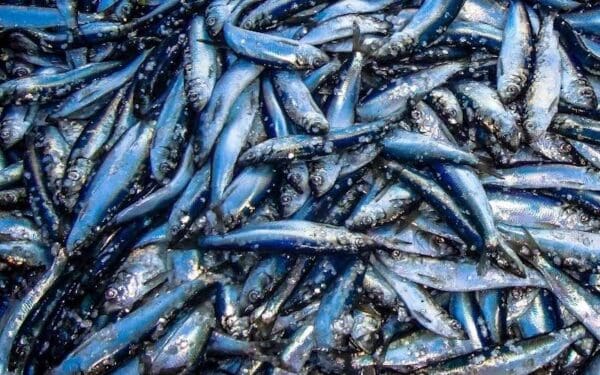
Atlantic cod is on the brink because of intense fishing and poor management. Their recovery starts with understanding how many cod area actually being caught. Photo: Brian Skerry
This is part one of a three-part series on the current state of Atlantic cod in New England. Part one explores how cod management today is relying on inaccurate data – and how monitoring fishing trips can help solve the problem.
When you go to the seafood counter at your local grocery store, you’d expect that the Atlantic cod for sale would be from right here in New England. But chances are, it’s not — it has probably been shipped in from Iceland and Norway.
That’s because centuries of intense fishing and decades of poor management have driven New England’s cod population to the brink. And, while our region’s most iconic fish could still recover, ensuring future generations will be able to enjoy fresh, local cod starts with improving our understanding of how many cod are actually being caught.
New England Cod Population at Historic Lows
When European colonists settled in Massachusetts, fishing for cod was their first money-making industry. In the 1700s, fishermen boasted that you could walk across the Atlantic on the backs of cod.
We are far removed from those legendary days. Cod has been overfished in New England for nearly three decades. Today, cod stocks are a fraction of what’s considered a healthy population level.
The situation never should have become so dire. Our federal fisheries law, the Magnuson-Stevens Act, mandates that regional fishery managers create plans to rebuild fish stocks when they are overfished. However, cod, at least in the Gulf of Maine, is unlikely to rebuild to a sustainable population on schedule. That’s because for years, the New England Fishery Management Council has favored short-term economic gain over the long-term health of the cod fishery. And it has come at a price.
Cod Management Decisions Are Based on Flawed Numbers
In recent years, fishery managers have reduced catch limits for cod to very low levels, but that has created another problem. These low limits have caused some fishermen to begin illegally discarding cod to avoid having their season cut short for exceeding quota.
Federal and state fisheries officials publicly concede that thousands of pounds of cod are being thrown overboard on commercial fishing trips without being reported as required. So in the eyes of managers and scientists, those cod were never caught at all. This means that not a single person in New England knows exactly how many cod are being caught at sea, only to be thrown overboard dead or mortally injured. Illegal discarding behavior has been able to continue without consequence – except for the fish – because of lack of adequate monitoring in the groundfish fishery. And it means that current management decisions are being made based on flawed catch data. This is a major problem as managers attempt to rebuild cod stocks.
Monitoring Fishing Trips Can Help Atlantic Cod
For management to work, managers need good science. That, in turn, requires that scientists know exactly how many fish are being caught at sea. Without accurate and reliable monitoring, it is impossible to know what proper catch limits should be, when catch limits have actually been reached, and how much progress we are making towards rebuilding.
Right now, 15 percent of fishing trips in the commercial groundfish fishery, which includes Atlantic cod, are supposed to be monitored. While that number will increase to 31 percent at the start of the fishing year on May 1, it is still not enough. To achieve full accountability in the fishery and prevent illegal discarding, there needs to be 100 percent at-sea monitoring – otherwise managers and scientists will never understand how many fish are actually being caught.
Thankfully, the New England Fishery Management Council is currently trying to address the accountability and monitoring problem and is expected to analyze a suite of options in the coming months. CLF has been engaged in their efforts closely and will continue to advocate for 100 percent monitoring as the only path to true accountability.
We can’t bring back New England’s iconic Atlantic cod without good data. And we need to get this right today: for the cod themselves and for all of us in New England who should be able to buy local cod at the seafood counter and feel good about our choice.




